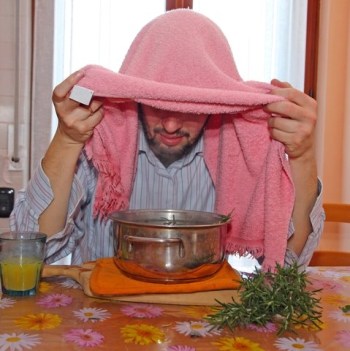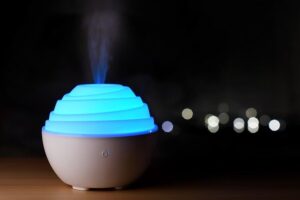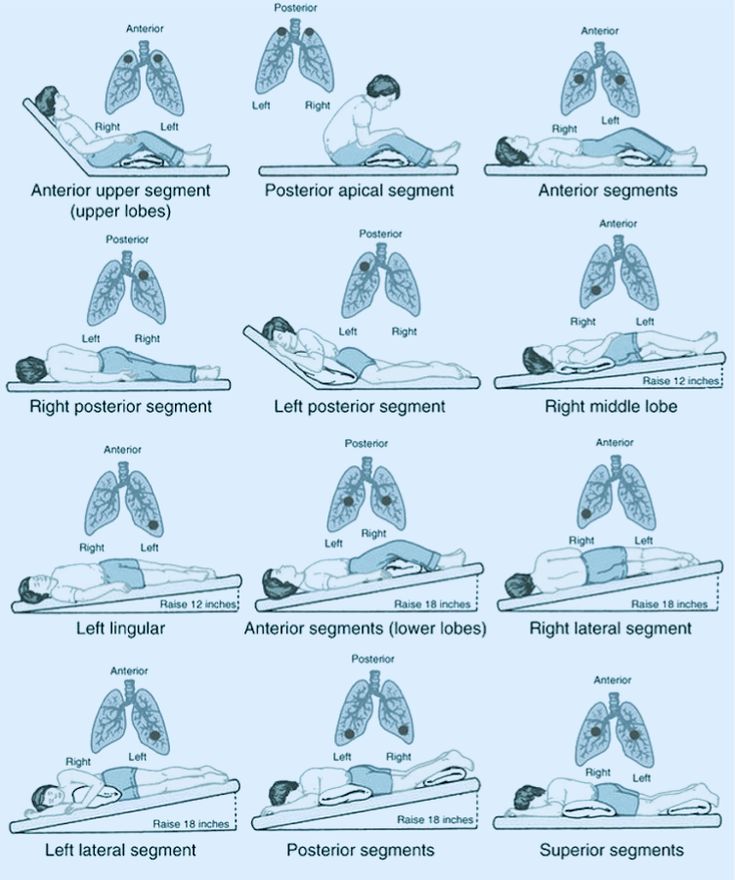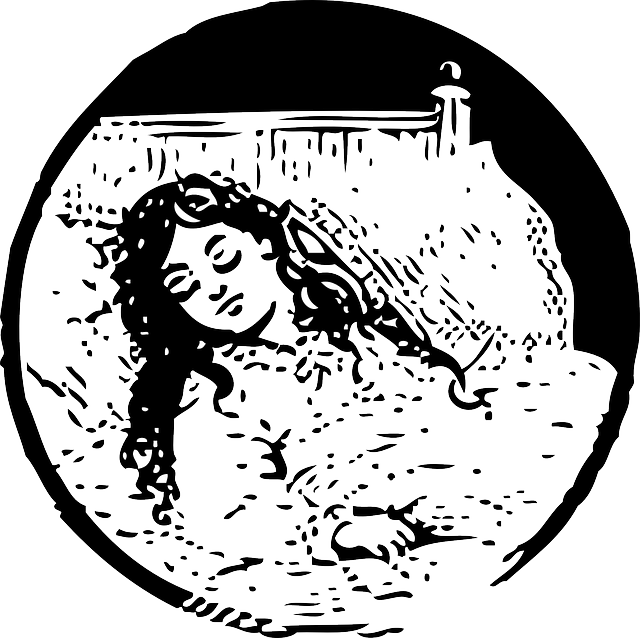The next stage of illness is called COVID19 Closing of the lungs or the Plague Closes the Lungs. Yuck! And that pretty much sums it up. The virus has progressed to a serious illness. Now you or someone you know is very sick.
Let’s review the stages as they were originally presented by the Doctors and researchers coming out of China and Italy.
- Prevention
- Clinical Observation
- Early Stage
- Closing of the Lungs
- Sever Period – Lungs Closed in and Out
- Recovery
It’s interesting to note that the stages, as listed above, seem to be holding true. During the last several weeks the U.S. has been working with several viral hot spots. And although reports vary regarding strategies for treating this virus, the stages of the disease seem to be more or less agreed upon. Or at least not refuted.
In previous posts we’ve discussed ideas about prevention, the clinical observation stage and the early stage of illness. We’ve also talked about how the virus operates and how it differs from other viruses in the corona family, like regular colds and flus. To read previous posts click on the links below.
- How the COVID19 Operates
- Prevention
- The Clinical Observation Stage
- COVID19 the Early Stage, Active Infection
Symptoms of COVID19 Closing of the Lungs Stage
When you’ve reached this stage of illness you are sick. There’s no mistaking it. If you haven’t been tested yet or been confirmed as having COVID-19 it’s a good idea to do so. Here is a list of symptoms likely to be experienced.
- The mucus or congestion has moved down, beyond the throat, and into the upper or lower part of the lungs.
- Nasal congestion with a cough.
- Dry Cough
- Coughing brings a feeling of relief.
- Fluid may be building up and tightening in the lungs. The Mucus can begin to congeal.
- Shortness of breath
- There may be little sputum or yellow sputum with occasional bloody sputum possible.
- Possible prolonged fevers. Many people report 103-degree fevers for as long as 7 days.
- Persistent body heat with or without chills and cold.
- Body and muscle aches
- Sore Throat
- Red tongue with greasy coating (sometimes yellow on top of white). The yellow indicating heat building up on top of cold or white.
- Slippery pulse
- Abdominal bloating and constipation
WOW, that is quite a list. Let’s take it one step at a time. We have upper and lower respiratory involvement, a high fever, constipation and stagnant build up in the organs and tissues (especially the lungs). This is when phlegm can begin to congeal in the lungs and cause damage the cilia, inhibiting the cough reflux. Our biggest concern is to keep the phlegm fluid, and to keep all the fluid moving. Then once the fluid is moving, we need to help our body dispose of the toxic remnants caused by virus. Or more accurately dispose of used up immune cells. To do this we’ll encourage the channels of elimination to work at maximum efficiency. That means we’ll encourage sweat, urination, and try to keep our bowels moving.
Begin by addressing your symptoms
When working with herbal remedies we often begin by making a list of symptoms as they are presenting for us. Sometimes looking at a long list of symptoms, like the one listed above, can be daunting. When we slow down and think about what’s actually going on for us, we can address the most important things first.
Remember, you are your own authority. Ask your body what it needs and start from there. Many times, what works for one person makes another worse. Rather than questioning your experience, value it, then go in a different direction. If you begin an herbal or holistic regime and it makes things worse, stop. Call a qualified professional like a doctor, or herbalist. Gauge what is going on and begin in a new direction.
The best thing to do is to develop a plan that supports the whole person. As you can see below, a lot of the herbs and therapies, we use are repeated. For example, Pleurisy Root is helpful for the management of a fever, thins mucus, drains excess fluid from the lungs, and supports kidney and bowel function. Almost all herbs have multiple uses. The botanicals we’re discussing in this series on COVID-19 all have a variety of actions specifically chosen to support you through this illness.
This information is not intended to take the place of a doctor’s care or medical intervention. It is intended for educational purposes only. To help you take control of your own health and help you make informed decisions for you and your family. I am not a doctor; I am an herbalist. As such I do not diagnose, treat or prescribe. Herbalists work with plants and with people to help each person reach their highest state of health.
Encourage Vitality
The goal of any herbal protocol is to bring the system back into a state of vitality. As such we must take into consideration each person’s state of wellness. Someone who is very sick, or who has a fragile constitution will require smaller more frequent doses. More is not necessarily better. Start small and work up from there. Each person will have their own optimal therapeutic dose. Be kind to yourself and your body. And always listen to what your body is telling you. It is an incredibly wise and intelligent being all on it’s own.
Possible treatment strategies for COVID19 Closing of the Lungs Stage.
Following is one possible treatment strategy using herbal and nutritional therapies.
- Keep the system as vitalized as possible.
- Thin the phlegm
- Address the fever
- Hydrate, hydrate, hydrate
- Keep the bowels and skin open
- Support the liver, kidneys and other organs
- Rest
- Gentle movement a few times per day.
Continue with warming and stimulating herbs.
Warming, stimulating herbs keep the fluid moving, help break up congestion and thin mucus. We’ve talked about most of these in previous posts. Some of the best herbs for the treatment of COVID19 seem to be Angelica, Lomatium, Fenugreek, Mullein, Ginger, Cayenne, Dong Quai, Pleurisy Root, Fennel and Osha.
Elecampane is one of my favorites and can be used when mucus is above the neck and in the lower lungs. It should not be used when mucus is in the upper lungs. See COVID19 in the Early Stage for more information about herbs and formulas that may be helpful.
When the lungs are closed, break up or thin the mucus.
Poultices and Plasters to break up and thin mucus.
You don’t hear much about poultices and plasters these days. But back in my early years of herbalism (some 35 years ago), we were taught to use plasters and poultices to break congestion anywhere in the body. Especially the stuck kind of congestion associated with pneumonia and bronchitis. The practice dates back to antiquity. Probably because it works.
How to make a Plaster or Poultice to Break up Lung Congestion
Plasters can be made with common kitchen supplies like potatoes, onions, garlic and ginger. Other herbs can be added to increase their action but aren’t necessary. Simply grate some potatoes or onions and steam for a few minutes. Enough to heat, but not cook the vegetables. Wrap the veggies in a thin cloth and place the cloth on the chest. You can rub yourself down with castor oil before applying the plaster to further break up congestion. Wrap up in a cozy blanket and stay warm.
Here is a video by a woman recovering from a severe bout with COVID19. It comes to us from facebook so I am not able to give her the proper credits. In the video she explains how she used onion as a poultice. She states that it was the one thing that offered instant relief. Thank you for sharing.
You can place a hot water bottle wrapped in a towel over the plaster to sustain the heat. DO NOT USE A HEATING PAD! The heating pad is too warm and steady and can overheat the heart. For additional information and plaster recipes see the post COVID19 from and herbalists’ perspective.
Herbal Steams to Break Up and Thin the Mucus
Steam inhalations are ideal for breaking up and loosening congestion. They are usually made with aromatic plants like Thyme and Peppermint but can be prepared with any of the herbs we’ve been talking about. You can even make them with black tea, ginger, garlic, rosemary and/or onions.
Inhaling the heat of the steam along with the herbs increases circulation to the respiratory system and acts as a natural expectorant. This may be the perfect solution if you have a cold and shivery kind of fever. One where you just can’t seem to warm up. Care should be taken, however. The use of steam can increase our body temperature. If the temperature is already high that could be problematic. In these cases, you can use an essential oil nebulizer or diffuser.
How to Prepare and Use a Steam Inhalation.

To prepare a steam inhalation use a heat proof bowel or saucepan. Boil about 4 cups of water. While the water is coming to a boil add 1 tablespoon (I use a small handful) of herbs to the bowel. Pour the boiling water over the herbs. Stir and cover for a few minutes. Then using a bath towel, make a tent over the pan of hot tea. Uncover the pot and inhale. Keep your eyes closed while you take as deep of breaths as feels good. It usually takes 5-7 minutes to feel some relief.
Some good herbs and essential oils to use for your steam are Propolis (use a liquid extract or granules), Helychrysium, Fenugreek, Fennel, Thyme, Oregano, Peppermint, Eucalyptus, and Rosemary. A steam can be made with a great many things depending on what you have in the kitchen. Consider things like Chai tea bags, Chamomile tea, grated onions, garlic, or even Italian seasonings.
A Naturopathic Doctor in Washington State reported superb results with an inhalation of propolis. He said that a steam or nebulizer of propolis liquid extract was successful with most of his patients. It acted as an anti-inflammatory and analgesic, thinning the mucus and making it easier to breathe.
Essential Oils for Steam Inhalation.

When using essential oils for inhalation use only 1 or 2 drops per 4 cups of boiling or hot water. More is not better. Too strong of a dilution can damage mucus membranes. it can also damage the small hairs of the respiratory, called cilia. These we’re trying to protect.
Herbs that Work to Break up and Thin Mucus
Several of the herbs we’ve discussed previously work to thin the mucus, separate it from the mucus membrane and protect our respiratory system. Remember our aim is to keep things warm and moving. Herbs that may be helpful here include Yerba Mansa, Grindelia, Osha Root, Mullein, thyme and Monarda. Also consider Angelica, Dong quai and Pine bark.
Manual Positioning for Mucus Drainage. COVID19 Closing of the Lungs

These images come to us courtesy Christina Bennet. They give position suggestions for postural drainage indicated for managing pneumonia without a ventilator. With ventilators at a high premium, these are some things we can do to relieve some pressure and fluid buildup.
Additionally here is a u-tube video with breathing exercises shown to help those who are experiencing an active COVID19 infection.
U-Tube Video with Breathing Exercises
Fever and COVID19 Closing of the Lungs
In the post Fever from an Herbalist Perspective (click here to review the post), we discussed the process and benefits of fever along with some ideas for herbal treatment. Some herbs that bring on sweating to manage a fever (hot or cold) include Yarrow, Pleurisy root, Boneset (if you’re not coughing), Ginger (especially with chills), Monarda, Barberry and Violet.
Everything is connected
At this point in the illness we may see 103 temperatures. The digestive system shuts down, or drastically slows, when the fever gets to about 99- or 100-degrees. The body is re-purposing the energy it takes to digest food to the immune system. Therefore, a common result of high fever is constipation. Sometimes the digestive system revolts further to offer diarrhea as an alternative. Herbs like Yellow Dock, Comfrey, Red Clover and Pleurisy root are good choices for dealing with constipation. Fenugreek, Mullein, Dill and Catnip are some herbs to decrease problematic diarrhea.
Dehydration and COVID19 Closing of the lungs
The most common concern with a prolonged fever is dehydration. The body is working hard, your perspiring, and will need electrolytes and nourishment to keep energy focused on the fight. The symptoms of dehydration might be difficult to spot because they look very much like the symptoms of illness. With that in mind it’s a good idea to assume your dehydrated. Drink hot water, or hot liquids and electrolyte replacement drinks. Symptoms of dehydration include thirst or a dry, sticky mouth, dark yellow pee, dry skin, headaches and muscle aches.
Ideas for hydration and the replacement of electrolytes are as follows.
- Drink water. Lots of water. Hot water is best when you have COVID19, especially at this stage.
- Drink hot nutritional broths. (You can put medicinal herbs in the broths)
- Take electrolyte replacement drinks like Emergan C, Gatorade, or a homemade electrolyte replacement drink. (see recipe below)
- Salt is an important part of hydration. Typically, you want about ¼ to ½ teaspoon salt to 16 oz. of liquid.
- Sugar or honey are very soluble in water and help to form hydrogen bonds. Small amounts of sugars are all that’s needed to help the process. Too much sugar can cause dehydration.
- Coconut water contains the naturally occurring electrolytes calcium, magnesium, phosphorus, potassium and sodium. These are supper helpful to counter dehydration and replenish electrolyte balance.
- Citrus fruits including apples are a wonderful addition to any hydration drink. They are high in potassium, vitamin c and sugars. Lemon scores the highest.
Herbal Electrolyte Drink
Under normal circumstances you could drink this herbal tea hot or cold. If your using it to replenish electrolytes during the COVID-19 illness hot drinks are indicated over cold. Sweeten with honey as desired. You can also add other herbs as you may need. Think Ginger for upset stomach or body aches, Lemon or other citrus juice to add more potassium.
Herbal Electrolyte Drink 1 part Nettle (Urtica dioica) 1 part Oatstraw (Avena sativa) 1 part Red Clover (Trifolium pratense) 1 part Alfalfa (Medicago sativa) 1 part Rose hips (Rosa spp.) Honey (optional) Mix together dried herbs. Poor 16 ounces boiling water over 1 ounce dried herb. Cover and steep for a minimum of 20 minutes. (Overnight is best). Strain and drink.
This is a fabulous infusion. It is highly nutritious, providing us with greatly needed easy to digest nutrition. It also offers needed electrolytes and supports liver and kidney function.
Support the Other Organs and Systems including the Liver and the Kidneys During COVID19 Illness
The Liver
The liver is responsible for metabolizing both nutrients and toxins. At the closing of the lungs stage in the COVID19 infection there is a whole lot of metabolizing going on. Our entire body is under stress. Herbs that may help keep the liver on an even keel through this process are Milk Thistle, Dandelion root, Blessed Thistle, Burdock, Nettle, Violet and St. Johns Wort.
The Kidneys
The Kidneys job is to maintain an overall fluid balance. They act as a filter, removing excess toxins and fluid through urine. The kidneys also regulate our blood pressure and make new red blood cells among other things.
When we can’t cough and get the mucus out, the lymph tissue can’t do its job and we fill with fluid. Everything gets stopped up, we can’t breathe, and the heart doesn’t get the oxygen it needs. The kidneys can’t manage the fluid levels and flow in the body. They get overworked. A sign kidneys depletion is an increasing tiredness in your feet and lower back. Like a feeling that your walking through deep snow or water. You feel tired and your heart starts dragging.
Some supportive herbs for the kidneys and fluid regulation include Goldenrod (Solidago), Parsley, Nettle, Mullein Root, Prickly Ash, Violet and Pleurisy Root.
Gentle Movement during the COVID19 Closing of the Lungs stage
The lymph system is dependent on movement. During this stage, when we are filled with fluid and it feels like the heart and lungs are closed it is very, very important to get the lymph moving. Many of the herbs we’ve already discussed with help with that. But, it may not be enough. I know it doesn’t feel good, and I know you don’t want to do it, but you have to get up and move. If only a little bit for a few minutes.
Movement Suggestions During the COVID19 Closing of the Lungs
- Get up and walk to the bathroom and back every few hours
- lift your arms over your head and then out to a T whenever you think about it.
- Move your legs from side to side.
- Get up and walk around a little bit again
- Sit in a sunny window to get some sun
I hope this has been helpful for you. Please feel free to call or contact me by e-mail, message or by phone if you have any questions or just need someone to talk to.
Blessings to you and your family. May you be well and not get to this stage. Next we will talk about the really serious stage. That’s right it get’s worse. Most will not get to that point, but I feel it’s important to know how to help if anyone in our lives need it.
Remember, you are loved
Annie
References
This information is based on reports coming out of China and Italy, reports by the CDC, the World Health Organization and the American Herbalist Guild.
Many of the references are from notes received by the many herbal teachers including Matthew Wood and Phyllis light.
file:///C:/Users/Annie/Desktop/CORONAVIRUS3312020-matthew%20wood.pdf
Disclaimer
The statements and ideas presented here are not intended to diagnose, treat, cure, or prevent any disease or condition. They have not been evaluated by the FDA. All ideas presented are for the sole purpose of education. To help you take control of your own health. If you have a health concern or condition, consult a physician. We suggest that you always consult a medical doctor before modifying your diet, using any new product, drug, supplement, or doing any new exercises.
These statements and products have not been evaluated by the FDA. They are not intended to diagnose, treat, cure, or prevent any disease or condition. If you have a health concern or condition, consult a physician. Always consult a medical doctor before modifying your diet, using any new product, drug, supplement, or doing any new exercises.
Herbs taken for health purposes should be treated with the same care as medicine. Herbal remedies are no substitute for a healthy diet and lifestyle. If you are serious about good health, you’ll want to combine diet, exercise, herbals, a good relationship with your doctor and a generally healthy lifestyle. No one of these will do it alone.
This information is designed to be used as part of a complete health plan. No products are intended to replace your doctor’s care, or to supersede any of his/her advice or prescriptions.

